Inasmuch as many have undertaken to compile an account of the things accomplished among us, just as they were handed down to us by those who from the beginning were eyewitnesses and servants of the word, it seemed fitting for me as well, having investigated everything carefully from the beginning, to write it out for you in consecutive order, most excellent Theophilus; so that you may know the exact truth about the things you have been taught. Lk 1:1-4 (NASB)
Luke wrote these words to a man named Theophilus. There is no information about who Theophilus was, however, his name means “lover of God.” “Theos” occurs in the Septuagint LXX with few exceptions as a translation for the Hebrew title “Elohim,” and the Hebrew holy Name, “Yahveh.” This latter is the personal name of God, the name under which He revealed Himself to Israel (Ex. 3:13-15). Therefore, in Hebrew, Theophilus was a “lover of Yahveh.” (Note: The Septuagint LXX is the Greek translation of the Hebrew Old Testament, and was completed about 200 years before the birth of Yahshua.)
Luke wanted to explain to Theophilus “in consecutive order” an account of events so that Theophilus would know the “exact truth about the things” concerning Yahshua. The actual time of Yahshua’s birth can be determined by carefully researching the Holy Scriptures.
As Luke begins his Gospel account he explains the birth of John the Baptist. John’s parents, Zacharias and Elizabeth, were of the tribe of Levi. Zacharias was a priest (Lk 1:5), and was serving in the Temple performing his priestly service (Lk 1:8) because he was “chosen by lot” (Lk 1:9) to burn incense (Lk 1:10). Zacharias served at a particular time of the year because he was of the “Course of Abijah,” (I Chr 24:10) an ancient family priest leader; this Course served as the 8th group.
When King David had grown old he had a census taken of the Levites (priests), and their number came to 38,000 (I Chr 23:1-3). David, Zadok and Ahimelech divided the priests into 24 groups according to their offices for their ministry. Lots were drawn for the 24 families that had descended from Aaron’s two surviving sons, Eleazar and Ithamar. (I Chr 24:3-5). The 8th lot chosen fell to Abijah (I Chr 24:10). Each group served two consecutive Sabbaths so that continuous service in the Temple would be maintained throughout the year. Josephus reports that each family division was in charge of ministry for eight days from “Sabbath to Sabbath” [Josephus: The Antiquities of the Jews, Book 7:14:7 (365)]. II Kgs. 11:4-9, provides information on the changing of the priestly groups in the Temple, from Sabbath to Sabbath.
Yahveh’s Biblical Calendar
Before we can determine the time of year Zacharias’ division was in service, we need to understand Yahveh’s Biblical calendar. Yahveh said to Moses and Aaron in the land of Egypt, “This month shall be the beginning of months for you; it is to be the first month of the year to you.” (Ex 12:1,2). Yahveh gave this command to Moses and Aaron in Egypt during the first Passover, the month of Aviv (March/April) (Ex 13:4).
| Course | Clan Leaders | Hebrew Month | Gregorian Month |
| 1, 2 | Y’hovariv, Y’da’yah | 1 Aviv | March/April |
| 3, 4 | Harim, S’orim | 2 Iyyar (Ziv) | April/May |
| 5, 6 | Malkiyah, Miyamin | 3 Sivan | May/June |
| 7, 8 | Hakotz, Aviyah | 4 Tammuz | June/July |
| 9, 10 | Yeshua, Sh’khanyahu | 5 Av | July/August |
| 11, 12 | Elyashiv, Yakim | 6 Elul | August/September |
| 13, 14 | Hupah, Yeshev’av | 7 Tishri (Ethanim) | September/October |
| 15, 16 | Bilgah, Immer | 8 Marchesvan (Bul) | October/November |
| 17, 18 | Hezir, HaPitzetz | 9 Chislev | November/December |
| 19, 20 | P’tachyah, Yechezk’el | 10 Tevet | December/January |
| 21, 22 | Yakhin, Gamul | 11 Shebat | January/February |
| 23, 24 | D’layahu, Ma’azyahu | 12 Adar | February/March |
(The Course number and Clan Leaders are taken from I Chr 24:7-18, followed by the Biblical and corresponding Gregorian months. The Biblical months can be found in the following Scriptures; Ex 13:4; I Kg 6:1,38; I Kg 8:2; Est 2:16; 8:9; Ezr 6:15; Neh 11; 2:1; 6:15; Zec 1:7.)
As stated, each Course served alternately in the Temple performing various duties for eight days, from Sabbath to Sabbath. Since Zacharias belonged to the eighth Course, he would have served on both the 15th and 16th Sabbaths of the year, in the fourth Biblical month of Tammuz (June/July).
While Zacharias was serving, the angel Gabriel stood at the right of the Altar of Incense (Lk 1:11), and told him that his wife would bear him a son (Lk 1:13). The angel Gabriel told Zacharias to give him the name John (Yahanan). In Hebrew “Yahanan” means “Yah is gracious,” for it was during this summer month of Tammuz (June/July) that Yahveh was gracious to Elizabeth and Zacharias. Both Zacharias and Elizabeth were well along in years, and Elizabeth was barren (Lk 1:6) “When the days of Zacharias’ priestly service were ended he went back home, and Elizabeth his wife became pregnant, and she kept herself in seclusion for 5 months” (Lk 1:23,24). This advances us to the month of Chislev (November/December).
Now in the sixth month of Elizabeth’s pregnancy (Tevet, December/January) the angel Gabriel appeared to Mary telling her that she would conceive in her womb and bear a son (Lk 1:26,31). Gabriel also brought Mary the news that her relative Elizabeth also conceived a son in her old age, and was now in her sixth month of pregnancy (Lk 1:36). In just about three months, in the month of Aviv (March/April), the babe’s voice would be heard. John the Baptist was about to enter the world as a babe crying out and later would be a Prophet “crying out.”
When Gabriel brought the exciting news to Mary about her relative Elizabeth, without delay Mary hurried to the town in the hill country of Judah where they lived (Lk 1:39). When Mary entered Elizabeth’s home and greeted her, six-month old John leapt for joy in Elizabeth’s womb. Mary was eager to hear all about the miracle that had taken place for Elizabeth. Instead, in a loud voice Elizabeth said to Mary, “Among all women, you are most blessed! And how blessed is the child in your womb” (Lk 1:41). This proclamation and John’s leaping for joy, affirmed to Mary that she was now already with child. These events took place in the cold wintry month of Tevet (December/January).
Mary, out of love for her aged relative, decided to stay with Elizabeth to tend to her needs. Mary cared for Elizabeth about three months, and returned home (Lk 1:56). Mary left Elizabeth, no doubt, in the hands of those who were well qualified to deliver children. Elizabeth’s time arrived and she gave birth to her promised son, Yahanan (Lk 1:57). It was now the month of Aviv (March/April), springtime, Passover season.
Mary still resided in Bethlehem, about six miles south of Jerusalem. On the day that Mary left Elizabeth many thoughts must have raced through her mind as she returned home, such as preparations for the Passover season and its details, and the fear of being found out that she with child, which could potentially cause suspicion and misunderstanding.
Mary was of the tribe of Judah, and of the lineage of King David. As a young obedient Jewess, she was betrothed to Joseph (Lk 2:4), a man of the same tribe (Lk 1:32; cf Ps 132:11; Rm 1:3). The thought of Joseph’s reaction when the time came for her to carefully and tactfully explain the miracle to him must have worried her.
When Joseph found Mary to be with child he had difficulty accepting Mary’s miraculous story (cf Mt 1:18), and planned to break off the engagement quietly, rather than put her to an open shame, which could result in stoning (cf Mt 1:19). But the hand of Yahveh intervened for both Mary and Joseph.
The angel Gabriel spoke to Joseph by means of a dream, encouraging him to take Mary home with him to Nazareth and be his wife (cf Mt 1:20). The angelic messenger explained all the wonderful news about the son that Mary would bear who would be named, Yahshua, meaning “Yahveh Saves,” “for He will save His people from their sins” (cf Mt 1:21). Joseph, convinced of this supernatural dream as coming from heaven, did what the angel told him (cf Mt 1:24).
Joseph married and took his wife, Mary, to his home and lovingly cared for her. He was careful not to have sexual relations with her for the remaining six months, “until she had given birth to her son” (cf Mt. 1:25) who would be arriving in the month of Tishri (September/October).
The autumn month of Tishri was a very special month. Three special Holy events take place in almost rapid succession in this month. On the first day of the month, is a complete Sabbath rest, no matter what day it falls, a holy day of remembrance with blasts on the shofar echoing throughout the land for people to hear and reflect upon one’s life and relationship with Yahveh and man. It is called Yom Teruah, the “Day of Blasts” of the shofar (Feast of Trumpets) (Lev 23:23,24).
Nine days later, on the tenth day of the month, a very solemn day was observed filled with prayers of repentance and self-denial. The High Priest entered the Most Holy Place in the Temple, and offered the Atonement Blood for all of national Israel (Lev 23:26-32). After this time of remembrance, reflection and repentance comes the ultimate event of celebration and rejoicing, the feast of all feasts – the Feast of Booths or Tabernacles (Sukkot). It is the seventh and final feast celebrated in the 7th month for 7 days, from Tishri 15 through 21, with one final special day, an 8th day, a solemn assembly (Lev 23:36; Jn 7:37).
Joseph cared for his precious wife, Mary, and the time was drawing near for her to deliver the promised son. However, there was an order issued by the Roman Emperor Augustus that a census be taken throughout the empire. This census or registration, the first of its kind, took place when Quirinus was governing Syria (Lk 2:1,2).
The purpose of the census was to enter into the Roman public records the names of men, their property and income, and to collect taxes. It was to take advantage of the people that Rome ruled, especially at the time of the year when the people had the most income and wealth, after the time of the fall harvest. [The Feast of Booths was also called the Feast of Ingathering (of the harvest) (Ex 34:22)]. Josephus reported that many of the Judeans became zealous and revolted against this taxation (Josephus, The Antiquities of the Jews, Book 18:1:1).
This time must have been difficult for Joseph and Mary because the decree required that all people return to their place of birth. Nazareth to Bethlehem was about 70 to 80 miles traveling south, and up into the Judean hills.
While they were in Bethlehem, the time came for Mary to give birth (Lk 2:6). Because of the masses of people, due to the census, there was no place for them to stay in living quarters. “When the fullness of time came, Yahveh sent forth His Son, born of a woman…” (Gal 4:4). “She gave birth to her first born child, a son, wrapped him in a cloth and laid him in a feeding trough” (Lk 2:7).
A short distance away were shepherds guarding their sheep at night. An angel of Yahveh appeared to them, “and the Glory of Yahveh shown all around them, which terrified them.” The angel announced the good news, that in the Town of David was born a Deliverer who is the Messiah (Lk 2:8-11). The angel gave a sign to the shepherds to confirm this good news, telling them they “would find a baby wrapped in cloth, lying in a manger.” This was the shepherds’ sole sign to affirm the child to be the Messiah (Lk 2:12).
Suddenly, along with the angel was a vast army of heaven praising Yahveh. “In the highest heaven, glory to Yahveh! And on earth, peace among people of good will!” (Lk 2:13,14).
The shepherds immediately left their fields, and found the baby lying in the feeding trough. They reported to Joseph and Mary all that they had been told by the angel about this child. “… and all who heard were amazed by what the shepherds said to them. Mary treasured all these things and kept mulling them over in her heart. Meanwhile, the shepherds returned, glorifying and praising Yahveh for everything that they had heard and seen” (Lk 2:18-20).
Given Joseph and Mary’s circumstances, it must have been difficult for them to rejoice in this month of rejoicing; for Yahveh had commanded all Israel to rejoice at this season (Dt 16:13-15). However, the mighty angels rejoiced, and the shepherds rejoiced, and the angels announced to the shepherds the Good News, “that will bring great joy to all people” (Lk 2:10). However, when Mary and Joseph heard all the amazing words of the shepherds, this must have brought great consolation and encouragement to them.
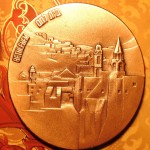
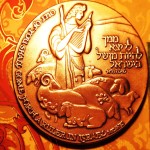
“‘But as for you, Bethlehem Ephrathah, too little to be among the clans of Judah, from you One will go forth for Me to be Ruler in Israel. His goings forth are from long ago, from the days of eternity.’ Therefore, He will give them up until the time when she who is in labor has borne a child…” Mic 5:2,3. Hallelu-YAH! It was under these difficult and humble circumstances the Savior and King of Heaven and Earth entered this world. These events all happened in Bethlehem Ephrathah, during the seventh month of Yahveh’s Biblical calendar – the month of Tishri (September/October).
Prophecies related to Yahshua’s Birth:
There are many prophecies about Yahshua, Our Savior, in connection with His birth that are stated in the Torah (Old Testament/First Covenant), and fulfilled in the New Testament (Second Covenant).
- Be the Seed of the woman: Gen 3:15; Gal 4:4
- Be the Seed of Abraham: Gen 12:3; Gal 3:16
- Be the Seed of Yitzhak (Isaac): Gen 17:19; 21:12; Lk 3:23,24
- Be the Seed of Ya’akov (Jacob): Gen 28:14; Mt 1:1,2
- Be the Descendant of Yahudah (Judah): Gen 49:10; Lk 3:33
- Be a Descendant of David: Jer 23:5; Rev 22:16
- Be born of a virgin**: Isa 7:14; Mt 1:18-23; Lk 2:4-7
- Be born in Bethlehem: Mic 5:2; Lk 2:4-7
- Be called “Netzer” (Branch): Isa 11:1 (synonym: “Tzemach” is branch); Jer 23:5; 33:15; Zec 3:8; 6:12; Mt 2:23 (called a “Natzrati,” a Nazarene, spoken by implication by the prophets)
** Young woman or virgin? There are those who contend that Mary was not a virgin because the word in Is 7:14 for “virgin” in Hebrew is “almah” which means “young woman.” This is correct; however, Mary was a young woman who had no premarital relations with a man.
In Ex 2:8 Moses’ sister Mariam was called “almah” (girl). Obviously, in this context, she is a very young child, a virgin. When Eleazar, sent out by Abraham to look for a wife for his son Isaac, Eleazar prayed “I am standing by the spring, and may it be the maiden who comes out to draw and to whom I say, “Please let me drink a little water from your jar…”. The word “maiden” is “almah” in Hebrew (Gen 24:43). The Scripture states that, “The girl was very beautiful, a virgin, never having had sexual relations with any man…” (Gen 24:16). In the Septuagint LXX the Jewish translators use the word “parthenos,” Greek for the word “virgin.” In Acts 21:8 the Scripture says that Philip had four daughters who were “virgins”, in Greek “parthenoi.”
The People of Galilee
Nazareth in Galilee: All the inhabitants of Galilee were looked upon with contempt by the people of Judea because they spoke a ruder dialect, were less cultivated and were more exposed by their position to contact with the heathen. (Smiths Bible Dictionary)
“Can any good thing come out of Nazareth?” Jn 1:46
“…the way you talk (your accent) gives you away.” Mt 26:73
“When Yahshua heard that Yochanan had been put in prison, He returned to the Galil; but He left Natzeret and came to live in K’far-Nachum, a lake shore town near the boundary between Z’vulun and Naftali. This happened in order to fulfill what Yeshayahu the prophet had said,
‘Land of Z’vulun and land of Naftali, toward the lake, beyond the Yarden, Galil-of-the-Goyim – the people living in darkness have seen a great light; upon those living in the region, in the shadow of death, light has dawned.’
From that time on, Yahshua began proclaiming, ‘Turn from your sins to Yahveh, for the Kingdom of Heaven is near!’” Mt 4:12-17 (CBJ)
Yahshua cared for the inhabitants of Galilee, who “were looked upon with contempt.”
The Time of Yahshua’s Circumcision
“On the eighth day, when it was time for His circumcision, He was given the name Yahshua, which is what the angel had called him before his conception” (Lk 2:21). Yahveh commanded that Hebrew baby boys be circumcised when eight days old (Gen 17:12). When this was done, the child entered into the covenant of Father Abraham. As mentioned earlier, the Feast of Booths was celebrated for seven days, ending with an additional eighth day solemn assembly called the Last Great Day of the Feast.
This day of circumcision of Yahshua was a solemn, holy day when the Son entered into the Abrahamic covenant. This corresponds exactly with the Last Great Day of the Feast.
“Destroy This Temple“
Yahshua told some Jewish religious leaders after cleansing the Temple, “Destroy this Temple, and in three days I will raise it up” (Jn 2:19). Here, Yahshua equates Himself to the Temple.
Solomon’s father, David, said “For you formed my inward parts; you wove me in my mother’s womb. I will give thanks to you, for I am fearfully and wonderfully made; wonderful are Your works, and my soul knows it well. My frame was not hidden from You, when I was made in secret, and skillfully wrought in the depths of the earth; Your eyes have seen my unformed substance; and in Your book were all written the days that were ordained for me when as yet there was not one of them (Ps 139:13-16).
The building of Solomon’s Temple was a lengthy process. Gifted artisans used their wisdom to skillfully create many Holy objects and beautiful decorative works of art. The Temple was completed and dedicated on the Feast of Booths (I Kg 8:2). Likewise, Yahshua, the living Temple, went through the process of being formed in His mother’s womb, was born on the Feast of Booths.
John 1:14
Young’s Literal Translation of John 1:14 reads: “And the Word became flesh, and did tabernacle among us, and we beheld His glory, glory as of an only begotten of a Father, full of grace and truth.”
This speaks of the Incarnation of the Word, Yahshua, Who came to tabernacle (Booth or dwell) among humanity. The fact that the Sukkah is a frail and temporary dwelling speaks of our temporal existence upon earth in these bodies.
The Rule of Inference:
In the law of evidence, an inference is a fact reasonably implied from another fact. It is a logical consequence. It is a process of reasoning. It derives a conclusion from a given fact or premise. It is the deduction of one proposition from another proposition. It is a conclusion drawn from evidence. An inferential fact or proposition, although not expressly stated, is sufficient to bind. This principle of interpretation is upheld by law courts. See Encyclopedia Britannica, V. 6, p. 615 (1952) and Black’s Law Dictionary, p. 436, Fourth Edition, West Pub. Co., 1951). (If Ye Continue, Appendix, Eight Rules of Interpretation, Guy Duty).
Although Scripture regarding the exact day of Yahshua’s birth is not expressly stated, we do know from deductive study of Scripture, that Our Savior was born in the month of Tishri. We can also infer that Yahshua was most likely born on the Feast of Booths, Tishri 15.
Questions to Ponder:
Would it be likely for shepherds to keep watch over their flocks at night, out in the fields, in the wintry month of Chislev (December/January)?
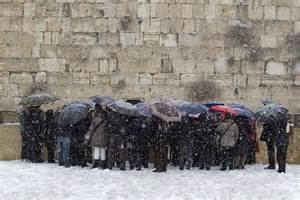 Or in the month of Tishri September/October)?
Or in the month of Tishri September/October)?
Would a mother place her newborn baby in a feeding trough, outside in the wintry month of Chislev (December/January)? Please note, there is no mention in the Scriptures of Joseph and Mary being in a stable. The sign given by the angel to the shepherds was to find a baby in a feeding trough, not a stable (Lk 2:12).
Would it be likely that a census was taken during the wintry months of Chislev (December/January), a time when it was difficult to travel, and some of the people’s wealth from the fall harvest had already been used?
Natalis Solis Invicti
Have you ever wondered how Christmas came to be celebrated on December 25th? (Please read the following advertisement copied from The Christian Science Monitor, Thursday, December 13, 2007.)
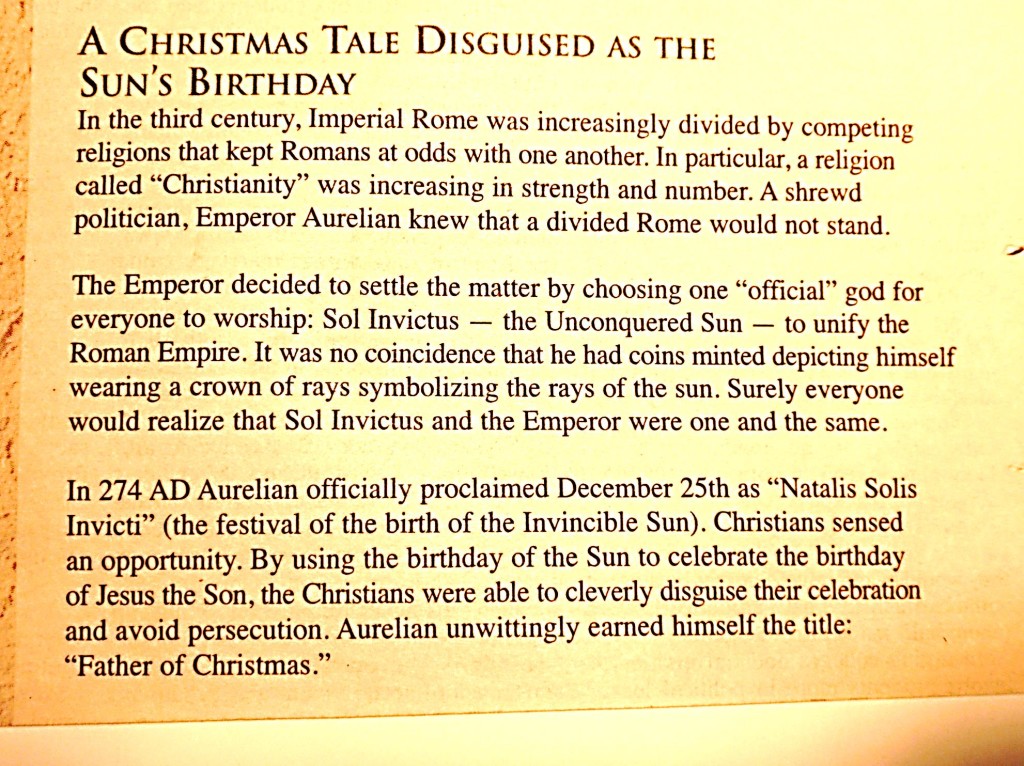
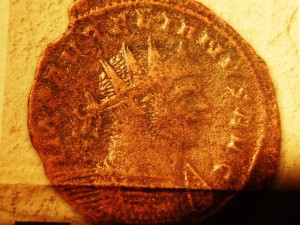
Yahveh commanded:
“You are to be holy to Me, for I, Yahveh, am holy; and I have set you apart from the peoples to be mine” (Lev 20:26).
“…make a distinction between the holy and the profane, and between the unclean and the clean” (Lev 10:10).
“For you used to be darkness; but now, united with Yahveh, you are light. Live like children of light, for the fruit of the light is in every kind of goodness, rightness and truth – try to determine what will please Yahveh. Have nothing to do with the deeds produced by darkness, but instead expose them…” (Eph 5:8-11)
Do you think Yahveh would approve of continuing to celebrate His Son’s birth on a day that has come down to us through paganism, the day of the Roman Saturnalia and Brumalia, the day of “natalis solis invicti,” birthday of the Invincible Sun?
“And to everyone to whom much has been given, much shall be required from him…” Lk 12:48.
A collection of quotes on Truth:
The facts are facts regardless of what we chose to believe. It is a mistaken assumption that the majority is always right. There is such a thing as persistence in the wrong direction. The least deviation from the truth is multiplied later a thousand fold. Little errors in the beginning lead to serious consequences in the end. We must be set free from the bondage of popular and traditional views of interpretation. The way to remove error is not to perpetuate ignorance; it is to enlighten the mind, so that it may be qualified to appreciate the truth. For we can do nothing against the truth, but only for the truth. II Cor 13:8
“May Yahveh bless you and keep you, may Yahveh make His face shine on you and show you His favor, may Yahveh lift up His face towards you and give you Shalom.”
Note: Bible verses quoted are from the New American Standard Bible, 1995, and Complete Jewish Bible, 1998.
Google+
